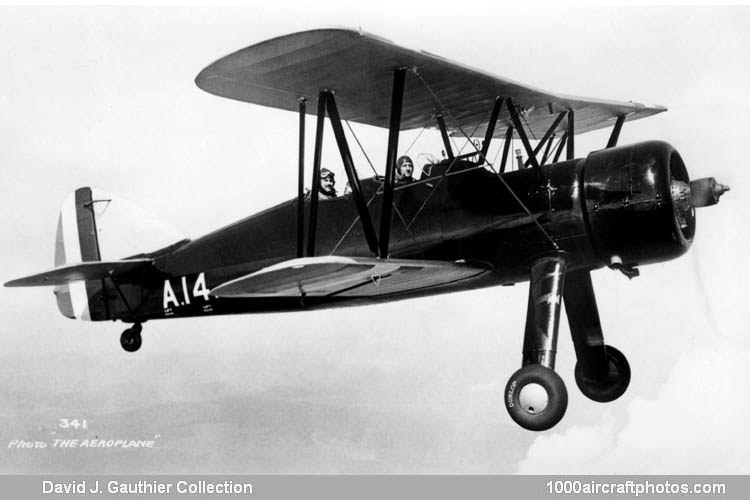The 636 was, therefore: (1) a single-seater fighter of high performance, (2) a two-seater dual-control machine which could be used for instruction in high-speed aerobatics, gunnery, light bombing, and every phase of a fighter pilot's training. Further developments were considered for bombing and army co-operation work or as a two-seater fighter, however it was eventually only used as a trainer.
The Avro 636 was ordered as an advanced trainer by the Irish Free State Air Force (IFSAF) in December 1934, the first of four examples (s/n A.14 to A.17, c/n 863 to 866) was flown by July 1935, although it took till October before they were taken on charge, the first two on October 16, the latter two ten days later. A.15 and A.16 were lost in crashes on February 9, 1940 and March 14, 1938 respectively. The other two were scrapped in 1941.
Originally the Avro 636 was to be powered by a 420 hp Armstrong Siddeley Jaguar IV fourteen-cylinder two-row air-cooled radial engine, or alternatively by a similar, but larger 680 hp Armstrong Siddeley Panther XI engine. However, the Irish aircraft were fitted with 460 hp Jaguar VIC engines, supplied by the IFSAF, and sometimes these aircraft referred to as Avro 667.
The Avro 636 had a welded steel tube structure fuselage, covered with doped fabric stretched over wooden formers, the side panels of the covering were separate detachable units which allowed examination of all controls. The top decking was sheet aluminum, the cockpits were raised above the top edge of the complete ring-type engine cowling, and from the "hump" thus formed in front of the front cockpit the pilot's two forward firing 0.303 in (7.7 mm) Vickers machine guns project.
The unequal span wings and tail units were built up with spars and ribs of high-tensile strip steel, and mass-balanced ailerons were fitted to both the top and bottom wings. The ailerons were balanced aerodynamically on the 'Frise'' principle. The cantilever landing gear legs were of large-diameter tubing, fitted with telescopic oleo and steel coil spring shock absorbers."
Span upper: 33 ft 0 in (10.06 m)
Span lower: 27 ft 3 in (8.31 m)
Length: 27 ft 6 in (8.38 m)
Height: 11 ft 7 in (3.53 m)
Wing area: 261 sq.ft (24.28 sq.m)
Empty weight: 2,766 lb (1,255 kg)
Loaded weight: 3,721 lb (1,688 kg)
Max speed: 175 mph (282 kmh) at sea level
Max speed: 146 mph (235 kmh) at 15,000 ft (4,572 m)
Min. speed: 60 mph (97 kmh)
Climb: to 5,000 ft (1,524 m) 4 min 48 sec
Climb: to 15,000 ft (4,572 m) 27 min 6 sec
Service ceiling: 16,700 ft (5,100 m)
Absolute ceiling: 18,000 ft (5,500 m)
